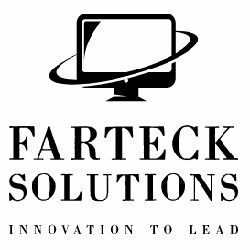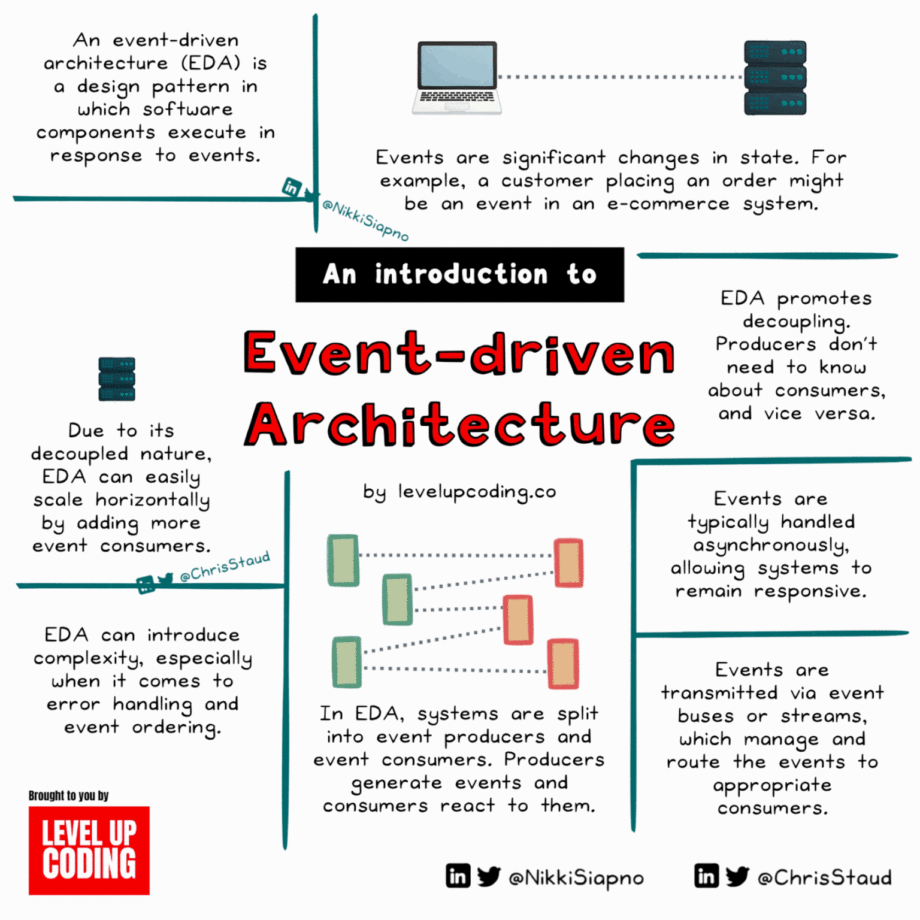Quite a lot of the tasks modern-day systems are required to do are in response to changes in state. Adding an item to a shopping cart, liking a post, and paying a bill are all state changes that trigger a set of tasks in their respective systems. This requirement has paved the way for a popular approach to system architecture known as event-driven architecture (EDA).
Event-driven architecture has four main components:
𝟭) 𝗘𝘃𝗲𝗻𝘁𝘀
These are significant changes in state. For example, a user signing up to a trial might be an event in a SaaS product. They’re generally immutable, typically lightweight and can carry a payload containing information about the change in state.
𝟮) 𝗣𝗿𝗼𝗱𝘂𝗰𝗲𝗿𝘀
The role of a producer is to detect or cause a change in state, and then generate an event that represents this change. The change can be initiated by a variety of sources such as system processes, user interactions, and external triggers.
𝟯) 𝗖𝗼𝗻𝘀𝘂𝗺𝗲𝗿𝘀
Consumers are the entities that are interested in and react to events. They subscribe to specific types of events and execute when those events occur.
𝟰) 𝗖𝗵𝗮𝗻𝗻𝗲𝗹𝘀
Meanwhile, channels facilitate sending events between producers and consumers.
Advantages of EDA:
🟢 Decoupling: Producers and consumers operate independently, enhancing system flexibility and maintainability.
🟢 Scalability: EDA can efficiently handle a surge in events, making it suitable for systems with varying loads.
🟢 Real-time responsiveness: Systems can react immediately to state changes, enhancing user experience and system reliability.
🟢 Resilience: Failures in one component don’t necessarily cascade through the system, thanks to the buffering capabilities of many channels.
Use cases:
🔸 IoT systems: Devices and sensors in IoT setups generate a plethora of events that EDA can efficiently manage.
🔸 Microservices: EDA facilitates communication between decoupled microservices, ensuring smooth system operations.
🔸 Real-time analytics: Immediate processing and analysis of data as it’s generated is a forte of EDA.
Disadvantages:
🔴 Complexity: Tracing and debugging issues in an event-driven system can be more challenging than in traditional architectures.
🔴 Event order: Ensuring events are processed in the correct sequence, especially in distributed setups, can be tricky.
🔴 Potential overhead: Introducing a message broker or channel can add latency, especially if not optimized.
While EDA offers a robust framework for building dynamic, responsive systems, it’s essential to consider its potential pitfalls. Like any architecture, it works best when applied thoughtfully to the right scenarios.
Source: Nikki Siapno



